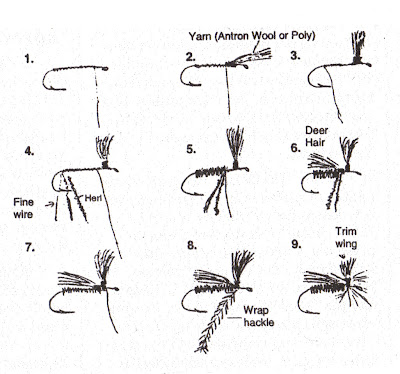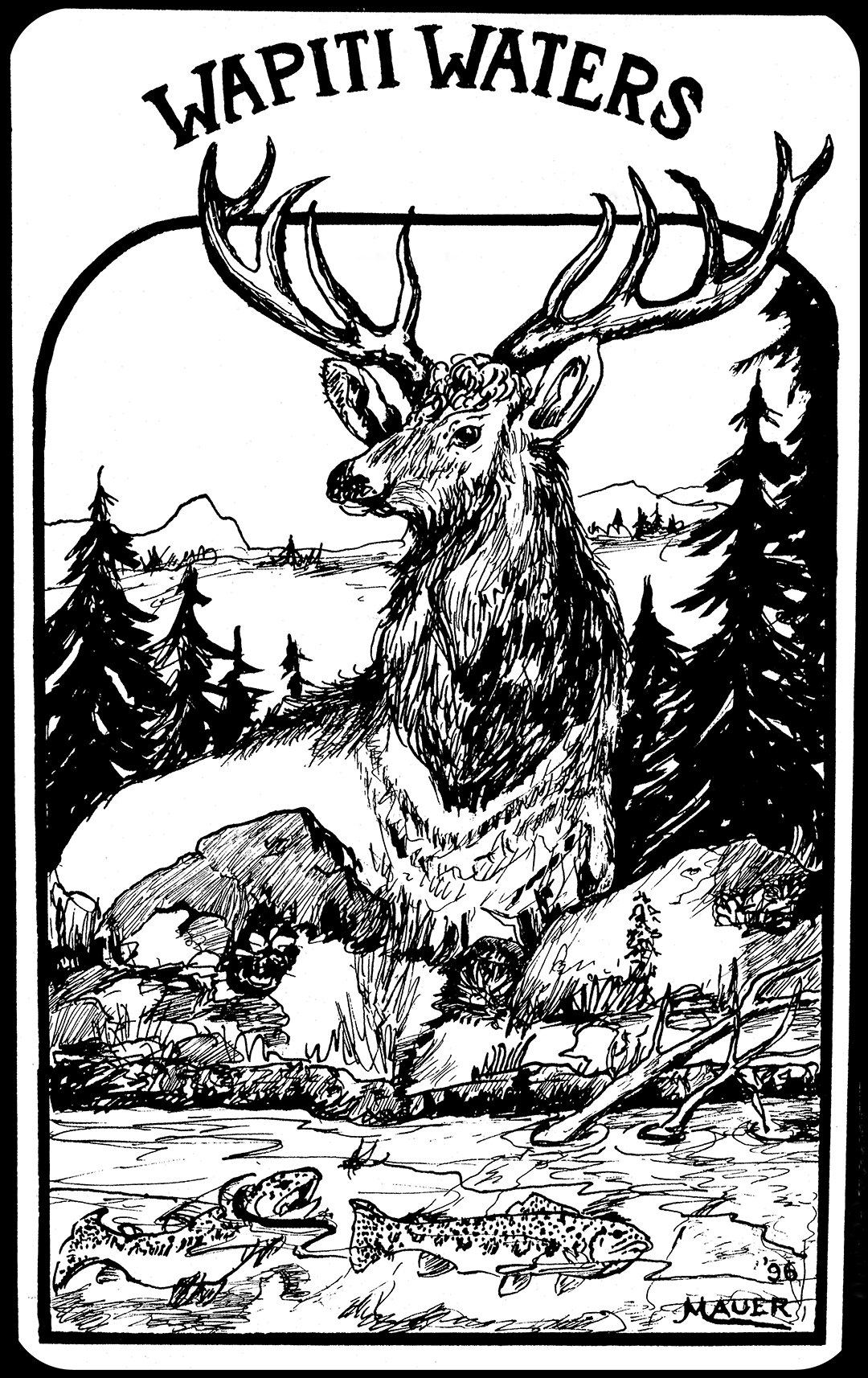 In guiding fly fishers over the years, I’ve noticed that clearly the single most important criterion for clients fishing out of a boat is fly visibility. Many great all-purpose and attractor dry flies work extremely well. Various colored Wulffs, humpies, parachutes, and the elk hair caddis come to mind — all proven patterns that catch lots of trout, but are not always easy to see.
In guiding fly fishers over the years, I’ve noticed that clearly the single most important criterion for clients fishing out of a boat is fly visibility. Many great all-purpose and attractor dry flies work extremely well. Various colored Wulffs, humpies, parachutes, and the elk hair caddis come to mind — all proven patterns that catch lots of trout, but are not always easy to see.
Another great all-purpose pattern is the Down-Wing Drake, developed by Phil Wright — nothing more than a grey thread body, a deer hair tail and down-wing, and a grey hackle wrapped forward of the down-wing. It’s a wonderful caddis and mayfly imitator. The only problem is that neither tired old eyes nor younger eyes accustomed to perusing the Wall Street Journal can see it.
Parachute dry flies are great, too. One can drag them around to the feeding lanes and they usually don’t sink or tip over. They seem to land with their wings upright most of the time and are easily seen with the naked eye, especially if tied with orange poly pro yarn or various colors of antron body wool for the upright wing. The high-visibility orange parachutes have been on the market for many years in various incarnations.
I’ve experimented with different down-winging schemes for a hi-vis orange, hot pink or white caddis parachute. Feedback from stubborn, hard-headed guide associates and friends has been extremely important in determining which combinations work best. In addition, I have had the opportunity to watch numerous clients of varying skill try them under differing water and light conditions. Thus has evolved “Banjo Jack’s Parachute Caddis.” Orange and hot pink seem easier to see under a sunny sky, while antron white seems to show up best under cloud cover.
By tying in a small clump of dark to medium-dark deer hair down-wing style behind the parachute wing, I’ve found an excellent caddis and /or mayfly emerger that is easy to see. Early to mid-summer fishing on many western waters can find both caddis and mayfly species throughout the day and Banjo Jack’s Parachute Caddis fits the bill in a variety of sizes and body colors.
I’ve varied body materials using both synthetic and natural materials, but peacock herl and hare’s ear dubbing ride low on the surface film and have proven very effective. A wire rib greatly increases the durability of the herl. You can vary the materials and even try a short tail of marabou or sparkle yarn. Give this pattern a chance and I’ll bet you will enjoy the results. It is particularly good in smaller sizes, like 16’s.

The directions for tying are as follows:
- Start at the eye. Give head a good bed of thread and bring thread toward the eye of the hook.
- One-quarter shank length behind the eye, tie in a couple of strands of orange poly yarn with 6 good wraps and trim off as closely as possible. (The amount of poly yarn varies with hook size)
- Pull up the yarn into a post-wing and use 10 clockwise wraps around the base of the post; then reverse the thread and put on ten counter-clockwise wraps; don’t trim the wing top. This forms a sturdy base for wrapping the hackle.
- Move the thread to the back of the hook and tie in the body materials, e.g. three strands of peacock herl and some fine copper wire. Wrap the thread back up to behind the wing.
- Wrap the herl to behind the wing, but don’t crowd the wing and don’t cut the herl strands. Then wrap the wire to rib the body and trim the wire.
- Next take a sparse clump of deer body hair (flank or shoulder area) and trim the butts evenly. Trim so that the ends won’t extend too far beyond the end of the hook.
- Tie in the down wing firmly. Wrap the herl over the butts and under the orange wing, then tie off.
- Tie in a grey dun or grizzly hackle sword and wrap parachute-style around the base of the orange poly wing. Five or six turns will float the fly just fine.
- Whip-finish the head, cut the thread and trim the orange wing fairly short.

